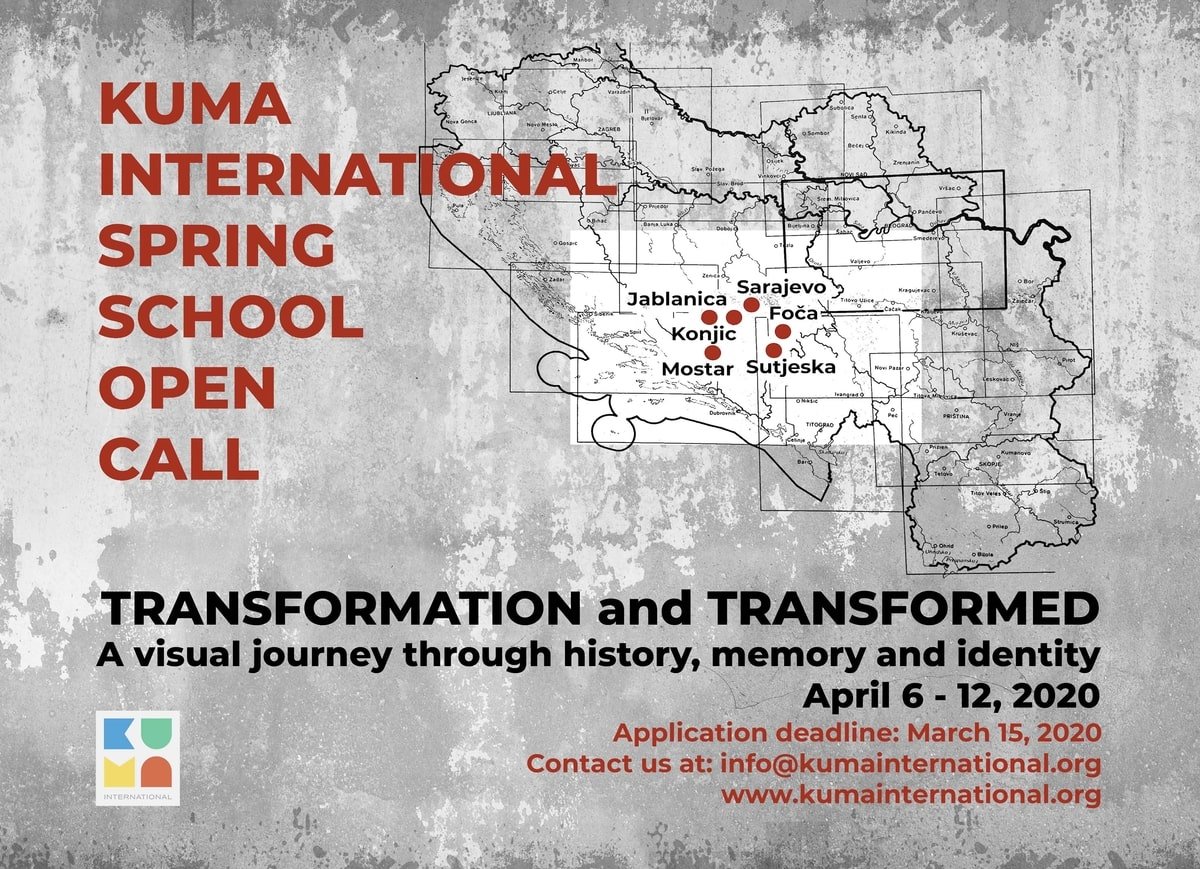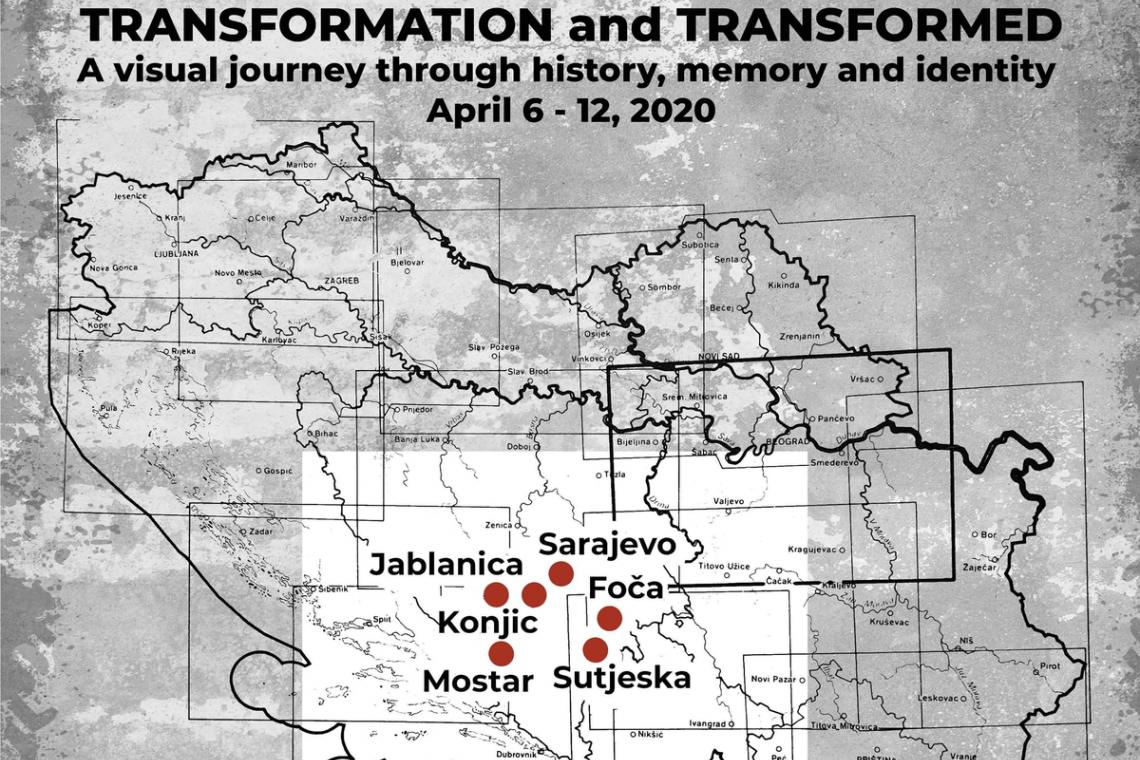In 2020, on the 25th anniversary since the end of the Bosnian war and the Srebrenica genocide in 1995, Kuma will launch a new educational program: Kuma International Spring School. Local and international participants will have the opportunity not only to get acquainted with local art history and architecture, and to increase their critical awareness and civic responsibility, but they will also immerse themselves in the cultural environment as a whole by being situated directly in the local places of past events and by meeting the protagonists of the local cultural scene.
Visual arts 1992-1995
While investigating the impact of the 1992-95 war on visual arts from Bosnia and Herzegovina, the project will also look at the role played by artists, architects and cultural workers in the memorialization of the past in a country where there is an ongoing struggle over memories of the war and its aftermath, and where the three main ethnic groups support different narratives, while there is still an on-going denial of the 1995 Srebrenica genocide.
The journey through time
Envisioned as a journey through time in which art and culture are incorporated into a substantial exploration of history, memory and identity, the school program aims to uncover the traces of time in Bosnia and Herzegovina (BiH) – from WWII, through Yugoslavia and its atrocious recent past, up to the present. In doing so, Kuma International Spring School aims to situate local narratives within a wider and broader regional context. In other words, while the program focuses and takes place in local communities and cultures, the school seeks to situate these local trends in a European context, both past and present, by examining some of the main features of modern European and Bosnian-Herzegovinian history, memory and identity, namely unity, antifascism, and democracy and, perhaps more importantly, the fall, and utter failure of these ideals – culminating in the first genocide to occur on European soil after WWII.
Objective of Kuma International Spring School
With both Europe and BiH witnessing an ever-increasing and ever-intensifying (re)turn to nationalism, isolationism, revisionism and right-wing extremism, it is paramount to gain a deeper understanding of how and why we arrived here (once again) to have even the slightest chance of preventing reoccurrences. Hence, the overall objective of Kuma International Spring School is to offer its participants unique learning from the past experience, enabling them to uncover that past injuries have persisted into the present while simultaneously empowering and encouraging them to create active, engaging and responsible changes towards a better future – in BiH and Europe.
Transformation
The theme of the Kuma International Spring School is transformation – past, present and future. Exploring transformations of knowledge, territories, spaces, memories, truths, identities, societies and ideologies, the program centres around the notion that transformation is an integral part of the human condition and experience, and that by transforming ourselves we (trans)form our reality. As a continuous process comprised of deliberate actions, transformation can be both limiting and liberating. Thus, in working with this complex concept of transformation, be it historical, ideological, spatial, societal or otherwise, and viewing in through the prism of culture and art, the program captures the many transformations of BiH – its trials, triumphs and tribulations.
General Program
Quite deliberately albeit symbolically, the first Kuma International Spring School will commence on April 6 2020, one of the most significant dates of the history of the capital of BiH. On April 6 1945, the capital was the scene of one of its greatest victories, namely the liberation from the Nazi occupation. Not even half a century later, on April 6 1992, the city fell under a siege that lasted for endless 1425 nights. The remnants of both these historical events can be felt to this day. April 6 is simultaneously a day of celebration, a day of glory but it is also a day of sorrow, a day of mourning: Sarajevo Day. A day apt for remembering, reflecting, and learning; a day off and for transformation. It is only suitable, then, that the first Kuma International Spring School will be launched on that day in Sarajevo before travelling to other important sites and places in Bosnia and Herzegovina. In seven days, the school will take its participants to visit three different cities and several museums, galleries and monuments which interlink the various pasts of Bosnia and Herzegovina: WWII, socialism and Yugoslavia, the war of the 1990s and the present path to democracy.
In addition to these visits, the program will include lectures, memory walks and public debates, as well as relevant cultural and artistic events carried out by local and international artists, art historians and architects.
School fee and costs
The fee covers tuition, accommodation in Mostar (three nights), transportation between Sarajevo, Konjic, Jablanica, Mostar, Sutjeska Park, entrances to museums and galleries, welcome drinks. Scholarships are available for local students. Participants will take care of their accommodation in Sarajevo.
Application and Contact Information
Please note that the schedule is subjected to change due to the availability of our local and international guests.
For more information about costs and scholarships available please contact us at info [at] kumainternational.org
To apply please send us your motivation letter and a CV at: http://kumainternational.org/application/
Application deadline: March 15, 2020


